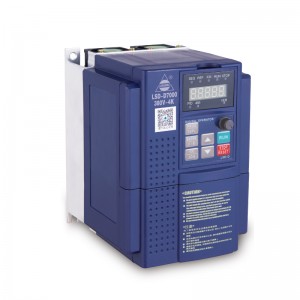With the continuous improvement of industrial automation, frequency converters have been widely used. Such as air conditioner load, crusher load, large kiln calciner load, compressor load, rolling mill load, converter load, hoist load, roller table load, etc.
Although the inverter has good anti-interference and resistance to harsh environments. However, due to the various actual conditions at the work site of the inverter, it is inevitable that there will be some relatively harsh working environments and conditions. In this case, the operation of the inverter may have a high probability of failure.
Today, I will introduce the four major issues for the normal operation of the inverter:
1. Physical environment matters
1. Working temperature. As a high-power electronic component, the inverter is easily affected by the operating temperature. Products are generally required to be between 0 and 55°C, but in order to ensure safe and reliable work, you should consider leaving space for use, and it is best to keep it below 40°C. In order to strictly comply with the installation requirements in the product specification, the High-Performance General-Purpose Vector VFD LSD-D7000 should be installed on the upper part of the box in the control box. At the same time, it is required that heating elements or elements that are easy to heat must not be installed on the bottom of the inverter.
2. Ambient temperature. When the temperature is too high and the temperature changes greatly, condensation is prone to occur inside the converter, and its insulation performance will be greatly reduced, and it may even cause a short circuit accident.
3. Corrosive gas. If there may be a problem of a large concentration of corrosive gas at the work site of the inverter, problems such as corrosion of the wires of the components, corrosion of the circuit board, accelerated aging of plastic devices, and reduced insulation performance will occur.
4. Vibration and shock. When the control cabinet with frequency converter is exposed to mechanical vibration and shock, the fault of poor electrical contact may occur. At this moment, the mechanical strength of the control cabinet should be improved, and at the same time away from the vibration source and impact source, it is also necessary to use shock-proof rubber pads to fix the vibration-generating parts, such as the electromagnetic switch inside and outside the control cabinet. After running for a period of time, the equipment should be inspected and maintained.
2. Electrical environment matters
1. Prevent electromagnetic interference. During the operation of the inverter, due to rectification and frequency conversion, a large number of interference electromagnetic waves will be generated around it. These high-frequency electromagnetic waves have certain interference to nearby instruments. In order to shield the interference from the inverter to the instrument, the instrument and electronic system in the cabinet should use metal casing to prevent interference. All parts should be reliably grounded. In addition, shielded control cables should be used for the connection between electrical components, meters and meters, and the shielding layer should be grounded. If the problem of electromagnetic interference is not handled well, the inverter may not work normally in the entire system, and at the same time, it may cause problems such as failure or damage of the control unit.
2. Prevent input overvoltage. Generally, overvoltage protection is provided at the power input end of the inverter, but if the high voltage at the input end is applied for too long, the input end of the inverter will be damaged. Therefore, in practical applications, it is necessary to verify the inverter’s input voltage, single-phase or three-phase voltage, and the rated voltage used by the inverter. Especially when the power supply voltage is extremely unstable, voltage stabilizing equipment should be provided, otherwise it will cause serious consequences.
Three, lightning protection matters
In inverter installation, a lightning absorption network is usually set up to prevent instantaneous lightning from invading and damaging the inverter. However, in actual work, especially when power lines are introduced overhead, a simple frequency converter absorption network cannot meet the requirements. This issue is particularly important in areas where lightning is active. If the power supply is an overhead incoming line, a special frequency conversion arrester (optional) should be installed at the incoming line, or a steel pipe should be buried at a distance of 20m from the inverter for special grounding protection according to the requirements of the specification. If the power supply is introduced through a cable, the lightning protection system in the control room should be prepared to prevent lightning from entering and damaging the equipment. Practice shows that this method can basically effectively solve the problem of lightning strikes.
Four, grounding issues
The correct grounding of the inverter is an important means to improve the sensitivity of the control system and suppress noise. The grounding resistance of the inverter grounding terminal E (G) is as small as possible. The cross-sectional area of the grounding conductor should not be less than 2mm2, and the length should be controlled within 20m. The grounding of the inverter must be separated from the grounding point of the power equipment and cannot be shared. The shielding layer of the signal input line should be connected to E (G), and the other end must not be grounded, otherwise it will cause the signal to fluctuate and cause the system to oscillate more than once. The inverter and the control cabinet should be electrically connected. If installation is difficult, copper wire can be used to jumper.
Post time: Jan-17-2022

